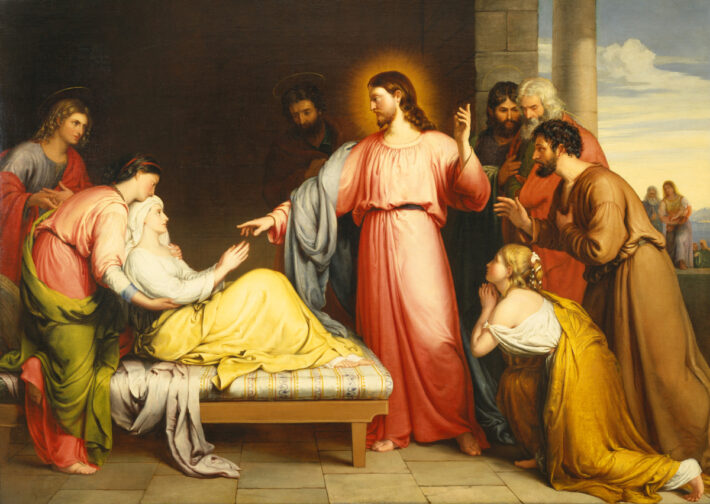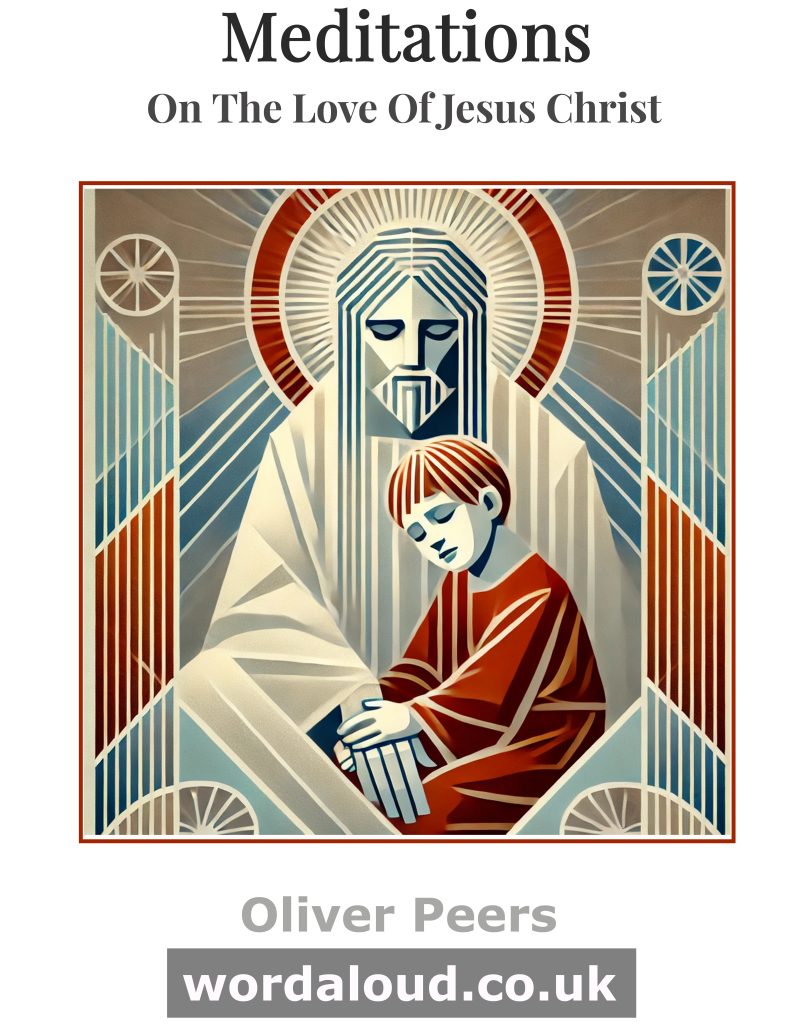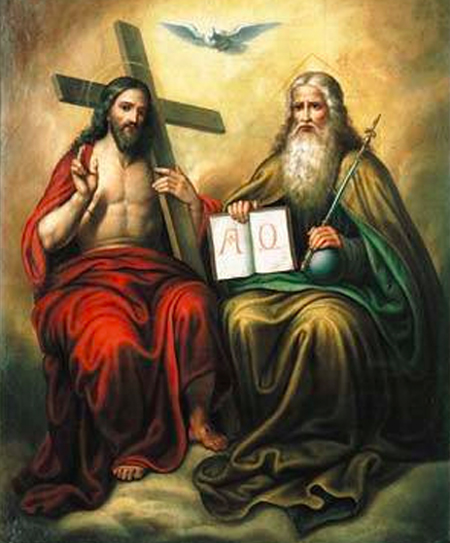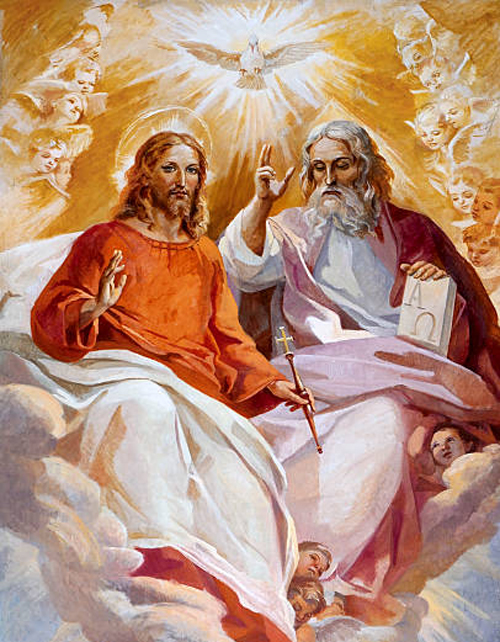Christian Art | Jesus Heals Simon Peter’s Mother-in-law | King James Audio Bible KJV
Luke 4: 38-44 – Week 22 Ordinary Time, Wednesday (King James Audio Bible KJV, Spoken Word)
38 ¶ And he arose out of the synagogue, and entered into Simon’s house. And Simon’s wife’s mother was taken with a great fever; and they besought him for her.
39 And he stood over her, and rebuked the fever; and it left her: and immediately she arose and ministered unto them.
40 ¶ Now when the sun was setting, all they that had any sick with divers diseases brought them unto him; and he laid his hands on every one of them, and healed them.
41 And devils also came out of many, crying out, and saying, Thou art Christ the Son of God. And he rebuking them suffered them not to speak: for they knew that he was Christ.
42 And when it was day, he departed and went into a desert place: and the people sought him, and came unto him, and stayed him, that he should not depart from them.
43 And he said unto them, I must preach the kingdom of God to other cities also: for therefore am I sent.
44 And he preached in the synagogues of Galilee.
When Jesus heals Simon Peter’s mother-in-law, the effect is instant. Not only does the fever leave her immediately, she is able immediately to get up out of bed and to serve Jesus and the other people present. This tells us something of the nature of our own healing, our freeing from sin, by Jesus. We are called and we are enabled to serve. This is our active participation in Christian community. We may recall that the sick were excluded from participation in religious services in Jewish society. Jesus calls the sick home, to be with God.
As the sun sets and the people come to Jesus, we see the good of community. People are bringing their sick. People help one another, responding to the hope of healing in altruistic fashion. Jesus heals everyone of the people who comes to him. There is nothing withheld. There is no-one Jesus rejects. As we think of the enormous variety of lives, of the good and the bad ways of living, which these people must have led, we are encouraged to know in these Gospel verses that God’s love is for everyone, that Jesus’ healing is for everyone, no matter what we have done. No-one deserves of his own merit to be saved. It is God who loves us absolutely and wants us only to let Him in.
The people want to keep Jesus with them. Jesus must make a great effort to depart and to be in a desert place so that he might prayer to the Father. While Jesus could have stayed in the one place and called the world to come to him to hear him preach and to receive Grace, Jesus sets out to preach in all of the cities. Here is a lesson for us also, teaching us to be active and energetic in our evangelizing, as we share the good news about Jesus. We may think of how we are called to demonstrate our Christianity through our relationships with other people, to express our Christianity through our good works, in addition to worshiping God in church and through prayer.![]()

Concluding Prayer
Lord, holy Father, faithful to your promise
you sent your Spirit
to bring together a people divided by sin.
Give us grace to foster unity and peace among men and women.
Through Christ our Lord.
King James Audio Bible | Endnotes
The Devils Know Jesus
The significance of the devils knowing Jesus lies in the fact that it illustrates the power and authority of Jesus over the spiritual world, including evil forces. It affirms Jesus’ identity as the Son of God and the Messiah, as even the demons recognize him as such.
The recognition of Jesus by the demons highlights the reality of spiritual warfare and the presence of evil in the world. The Apostle Paul wrote in Ephesians 6:12: ‘For we wrestle not against flesh and blood, but against principalities, against powers, against the rulers of the darkness of this world, against spiritual wickedness in high places.’ The demons represent these spiritual forces of wickedness, and their knowledge of Jesus emphasizes the importance of recognizing the reality of evil in our lives and the need to rely on Jesus’ power to overcome it.
Furthermore, the devils’ knowledge of Jesus speaks to the sovereignty and power of God. The demons, despite their rebellion against God, are ultimately subject to God’s authority and power. Jesus’ authority over the demons demonstrates God’s ultimate control over all things, including the spiritual realm.








